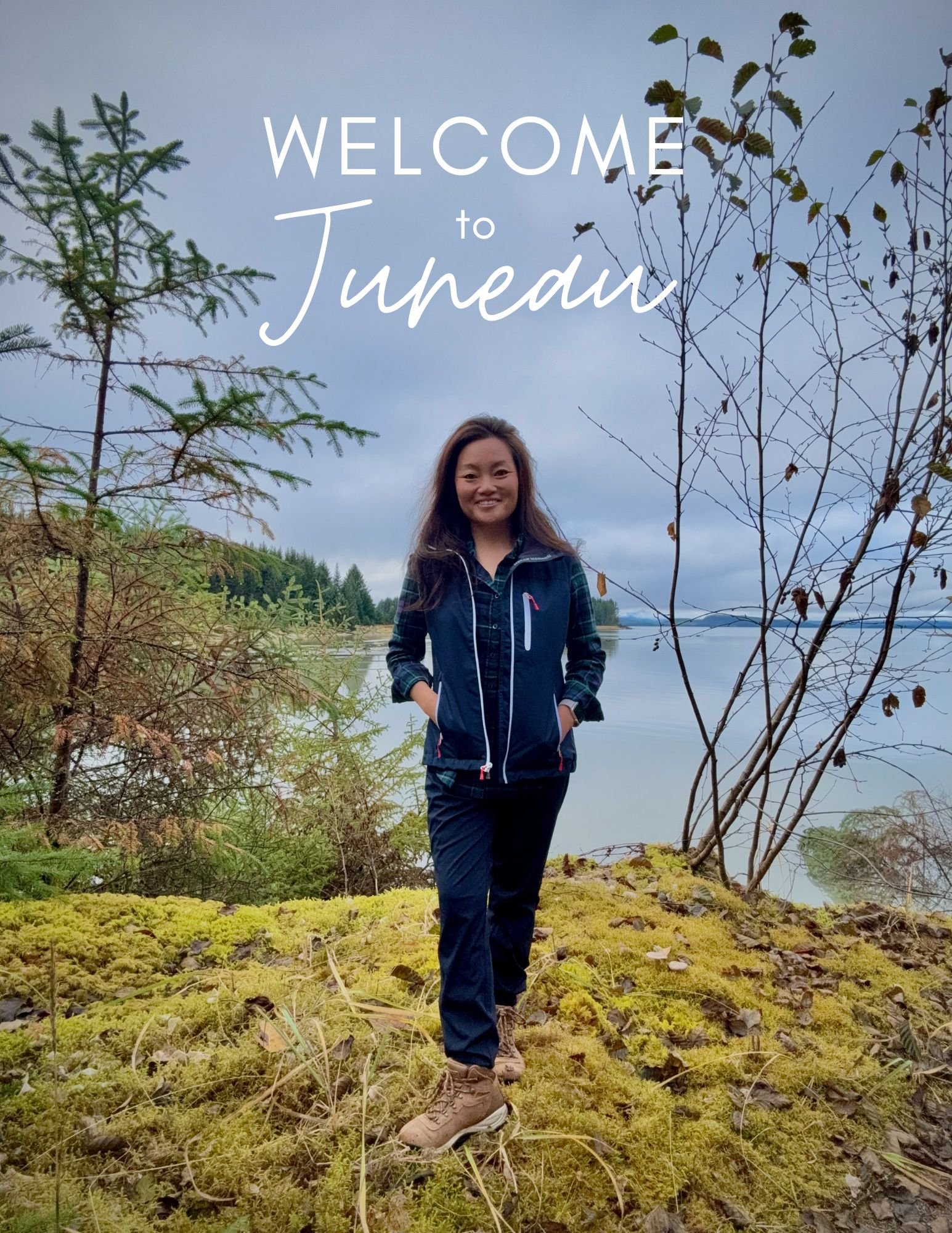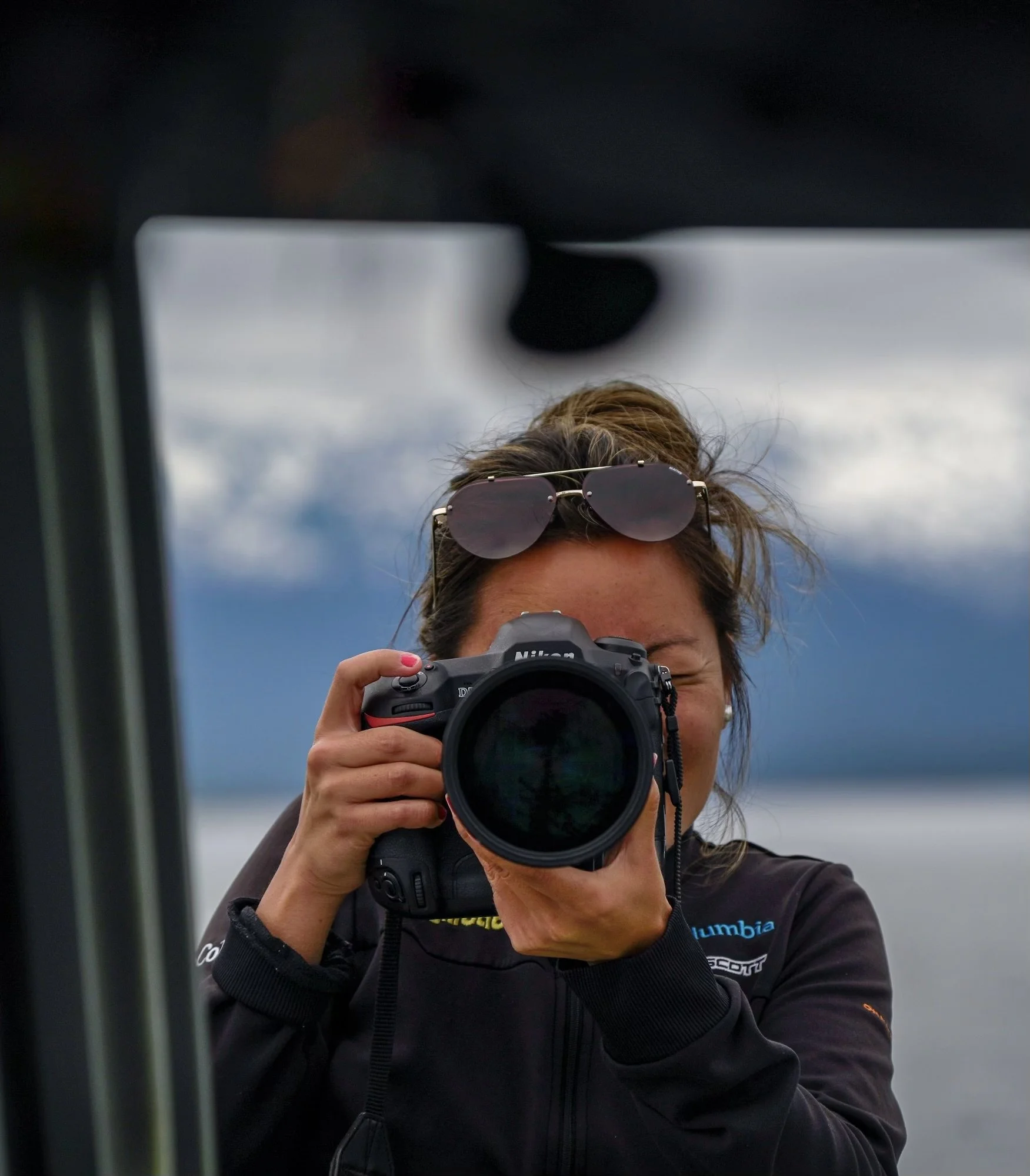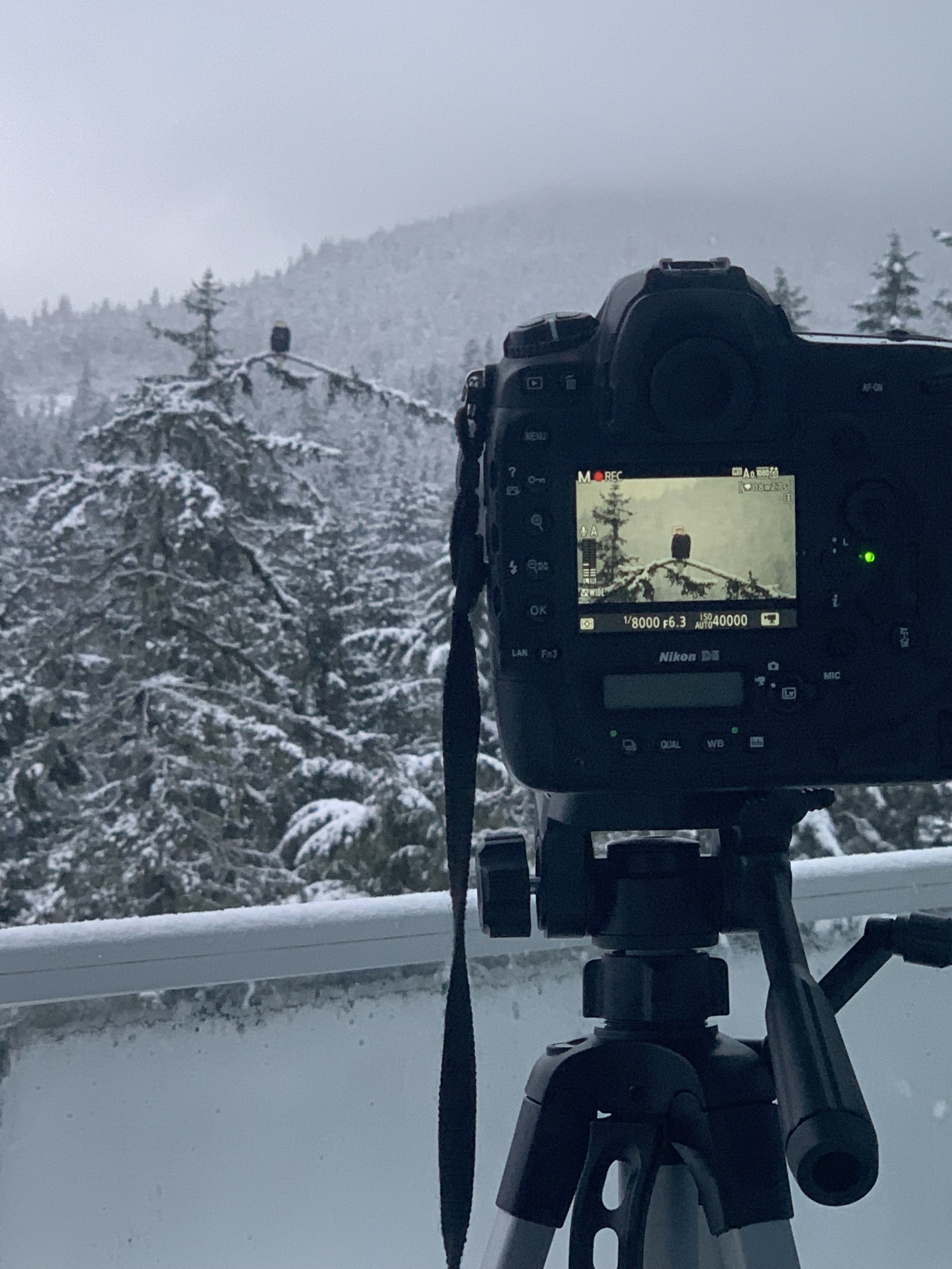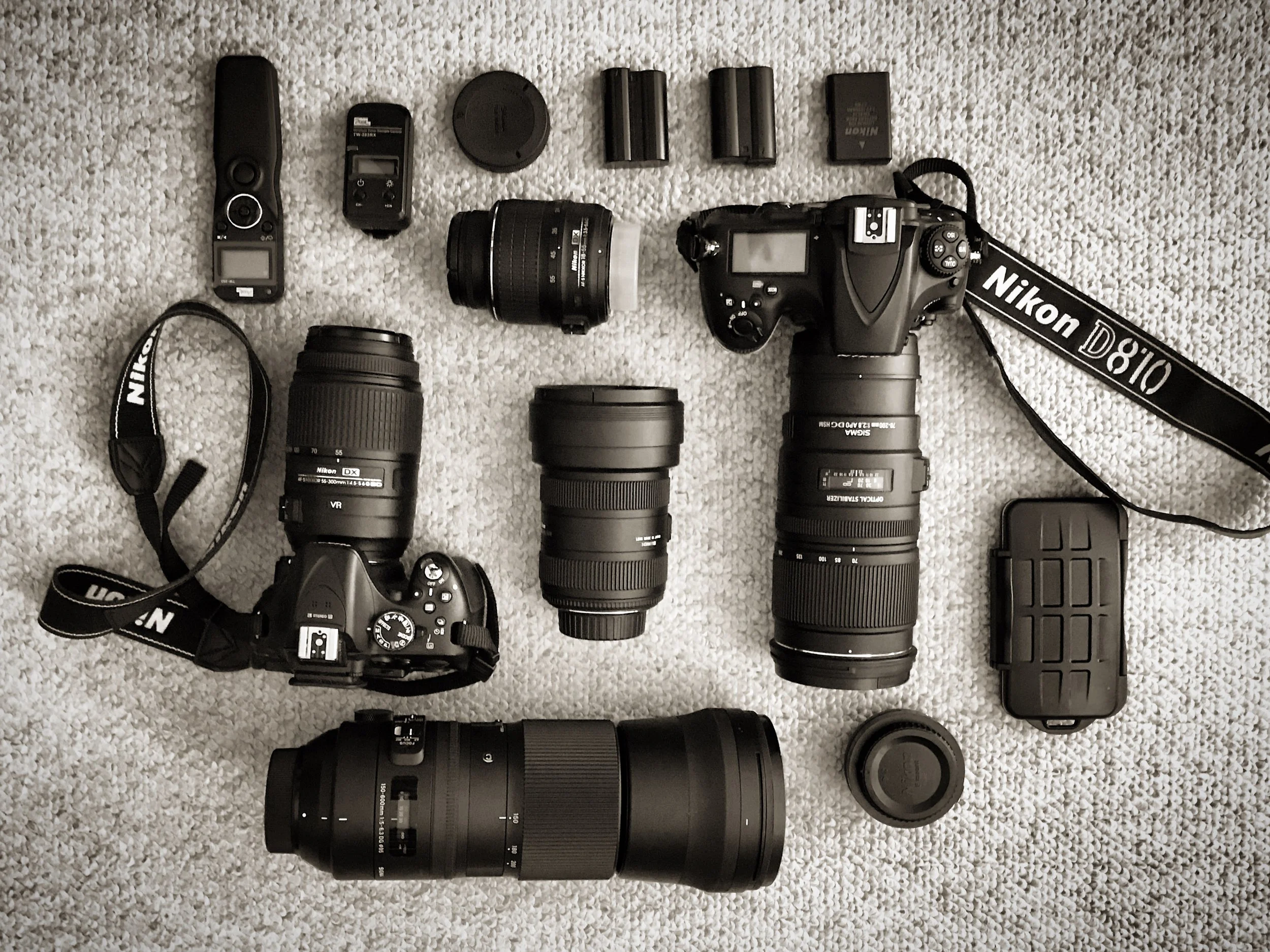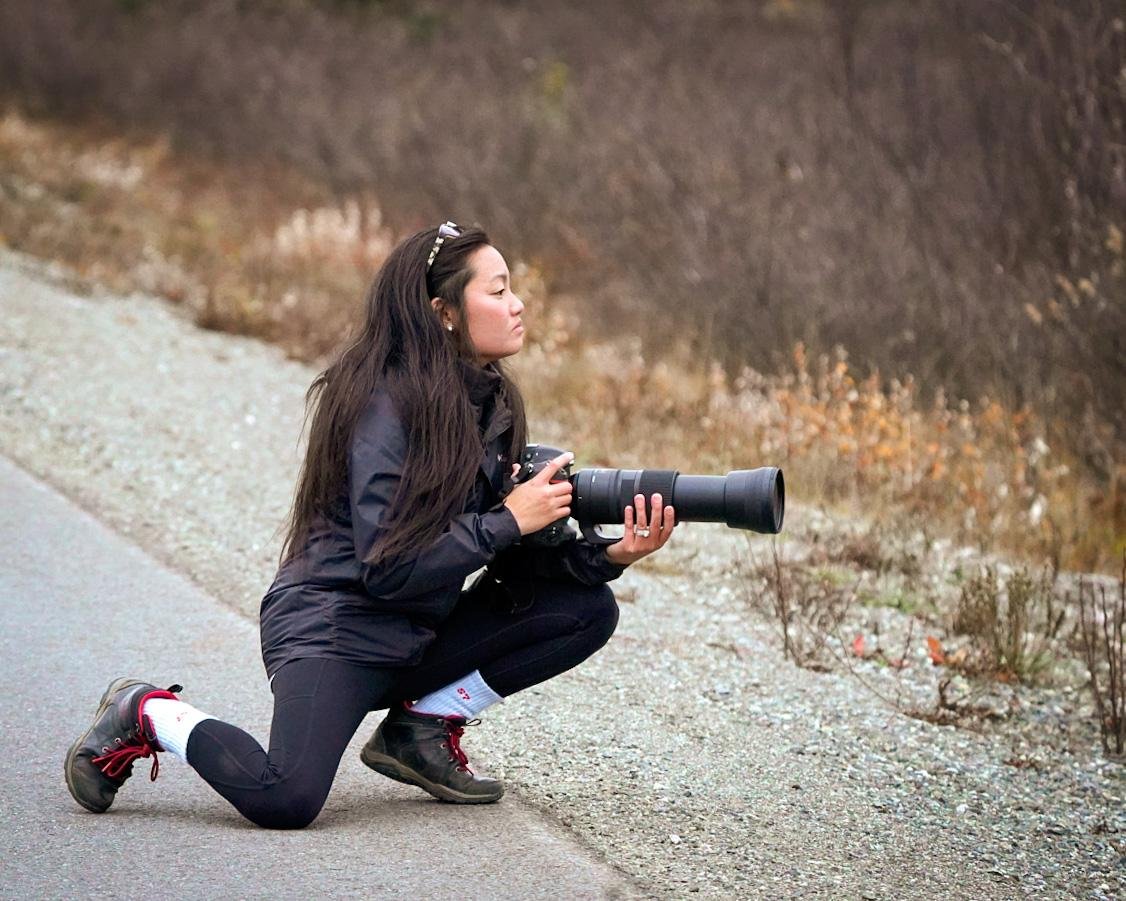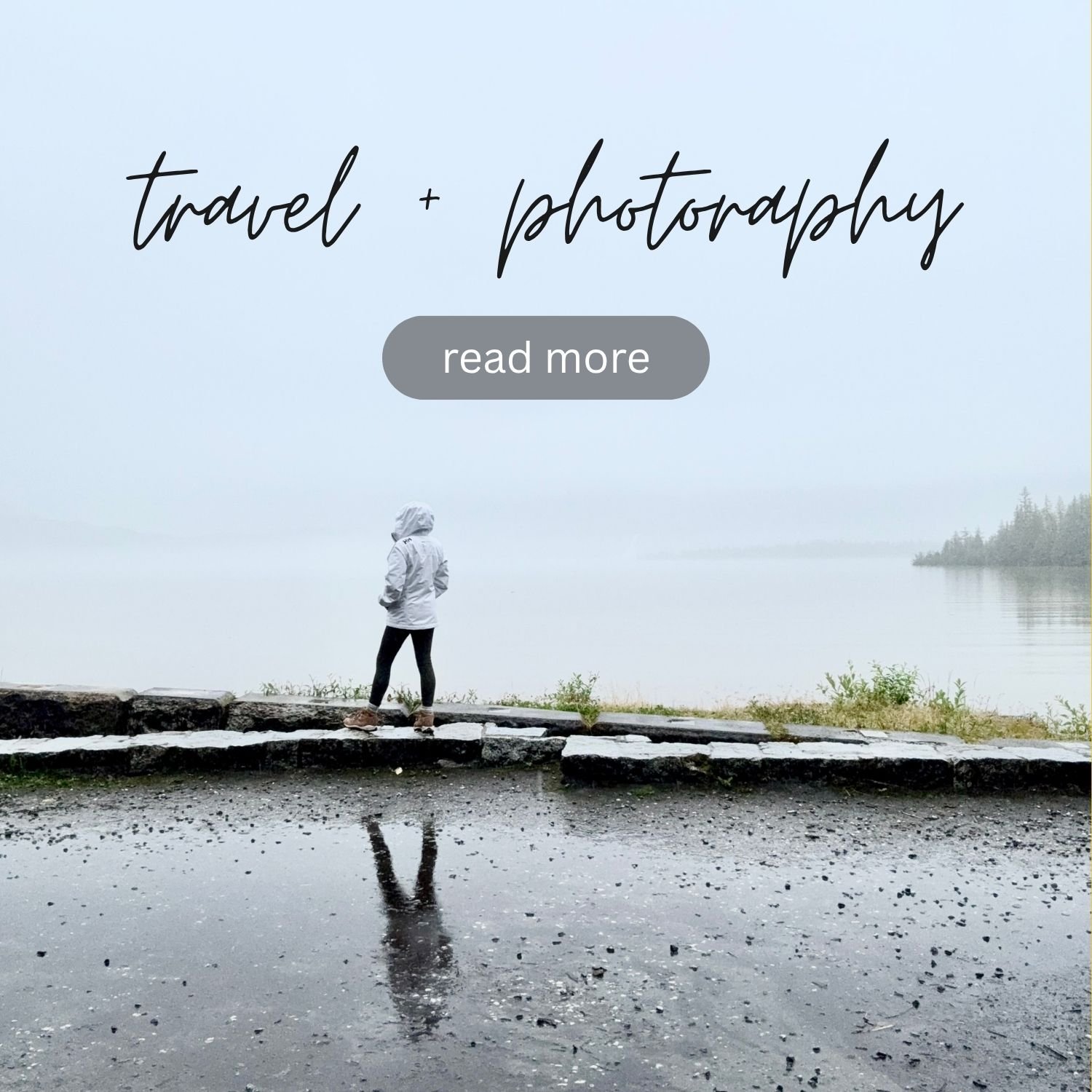Hi, I’m Mary — a photographer living in Juneau, Alaska, who spends a lot of time watching ships glide into port, listening for whale blows, and chasing light around mountains, harbors, and rain-soaked streets.
From my deck, I can almost always tell who’s “ready” for Alaska and who isn’t. Not because of gear, but because of attention. The people who come home with photos they truly love aren’t always the ones with the nicest camera. They’re the ones who are paying attention when the light shifts, when the fog lifts, when a whale’s tail appears where there was just empty water a second ago.
This guide is your simple, stress-free shot list: 12 photos you’ll be glad you captured on your Alaska cruise — plus easy tips for getting them, whether you’re using a phone or a camera.
The 12 Photos You Don’t Want to Miss
Here’s the quick list. If you capture nothing else, aim for these:
1. Your ship sailing into Southeast Alaska in soft morning or evening light
2. A wide shot of glacier ice with something for scale (your ship, a boat, or a person)
3. A whale’s tail or breach from deck or a small-boat tour
4. A bald eagle — in flight, perched, or silhouetted against mountains
5. Rainy-day reflections in a port town street (Juneau, Ketchikan, Sitka, etc.)
6. A working harbor scene: boats, docks, mist, and all
7. A “tiny human, big landscape” shot at a waterfall or viewpoint
8. A quiet moment on deck: you, a blanket, and the horizon
9. Layers of mountains and islands in the Inside Passage at dusk
10. A night shot from the ship: city lights, harbor, or stars
11. A detail that feels uniquely yours (boots, journal, tea, map, hands on the railing)
12. A farewell shot to your favorite port or your final sea day
The rest of this post walks you through where, when, and how to capture each one — without turning your vacation into a full-time photo shoot.
Your Ship Sailing Into Alaska Light
Why it matters:
There’s a quiet magic to the way your ship slips into Southeast Alaska — low clouds, soft light on the water, maybe a single fishing boat passing by. It sets the tone for your whole trip.
Where / when:
• Early morning or early evening as you approach Alaska or sail through narrow channels
• Look for gentle color in the sky — blues, pinks, soft grays
How to capture it:
• Phone: Wipe your lens (ship decks get misty), tap to focus on the horizon, and slightly lower your exposure if the sky feels too bright.
• Camera: Use a wider lens (24–35mm range) and keep your shutter speed fast enough to handle ship movement (1/250 or faster).
Extra tip:
Include the ship’s railing or a bit of deck in the frame so you remember what it felt like to stand there, not just what it looked like.
2. Glacier Ice With a Sense of Scale
Why it matters:
Glaciers are enormous, but photos can flatten them. Adding scale helps you remember just how massive that wall of ice really was.
Where / when:
• Glacier days: places like Glacier Bay or Tracy Arm, or a glacier-viewing excursion
• When the captain slows the ship or turns for viewing
How to capture it:
• Look for something small against the glacier:
• A tiny sightseeing boat
• The bow of your own ship
• A person on a viewing deck or trail
• Compose wide first, then grab a few closer shots of details (cracks, blue ice, calving if you’re lucky).
Extra tip:
Stay patient. The scene changes every few seconds as the ship turns. Sometimes the best angle is two minutes after everyone else went back inside.
3. Whale Tail or Breach
Why it matters:
If you see whales on your trip, those moments will live in your memory long after your suitcase is unpacked. The goal isn’t a perfect magazine shot — it’s a photo that brings you back to the feeling.
Where / when:
• On deck in calm waters
• Dedicated whale-watching excursions out of ports like Juneau or Icy Strait
How to capture it:
• Phone: Shoot video when whales are active. You can pull still frames later.
• Camera: Use your longest lens and a fast shutter (1/1000 or faster). Continuous focus and burst mode help.
• Keep both eyes open when you can; whales often surface where people aren’t pointing.
Extra tip:
Take one photo of your surroundings too — the boat, the mountains, the people watching. That context is part of the story.
Photographing eagle in Alaska
4. Bald Eagle in Its Element
Why it matters:
Eagles are woven into the everyday here. Capturing one in a tree, on a lamppost, or cruising over a harbor gives your gallery a sense of place.
Where / when:
• Harbor areas, light poles by the ship, tall trees near town
• Early morning or late day when they’re often more active
How to capture it:
• Start with a wider shot: eagle plus its surroundings. Then zoom or crop in.
• Don’t stress about perfection. Even a slightly distant eagle feels special when you know you were really there.
Extra tip:
Look up when you hear gulls calling loudly in one spot — often an eagle is nearby.
5. Rainy-Day Reflections in Port
Why it matters:
Alaska isn’t just blue skies and postcard sunsets. The rain is part of the experience — and it can make beautiful, moody photos.
Where / when:
• Any rainy port day (Juneau, Ketchikan, Sitka, etc.)
• Puddles, wet boardwalks, reflections in shop windows
How to capture it:
• Aim your camera or phone down: reflections of neon signs, colorful buildings, umbrellas.
• Look for one bright color (a jacket, a storefront) against all the grays and greens.
Extra tip:
Use your hood or hand to shield your lens from raindrops. One drop on the lens can soften the whole frame.
6. Working Harbor Scenes
Why it matters:
The working side of Alaska — fishing boats, tugs, docks, gear — tells as much of the story as the mountains do.
Where / when:
• Harbors near the cruise docks or a short walk away
• Early morning or later evening when boats are coming and going
How to capture it:
• Step back and look for layers: boats, docks, water, forest, clouds.
• Let lines lead the eye: docks, ropes, rails.
• Don’t be afraid of “busy” scenes; that’s the point.
Extra tip:
Take one frame that’s a little wider than you think you need. You’ll appreciate the extra breathing room when you look back later.
7. Tiny Human, Big Landscape
Why it matters:
Having a person in the frame lets you feel just how big Alaska really is. It also makes the photo deeply personal: you were there.
Where / when:
• Waterfall trails (like Nugget Falls at Mendenhall)
• Viewpoints, shoreline stops, train overlooks, and pullouts on excursions
How to capture it:
• Ask a travel partner to stand still for a few seconds at a safe spot.
• Compose so the person is relatively small in the frame compared to the landscape.
• Use a wider lens or step farther back.
Extra tip:
If you’re traveling solo, use a railing, rock, or backpack as a tripod and turn on the timer. You deserve to be in your own story.
8. Quiet Moment on Deck: Tea, Blanket, Horizon
Why it matters:
Some of the most powerful images aren’t the grandest. It might be you wrapped in a blanket watching the shoreline with a mug of something warm. That’s Alaska too.
Where / when:
• Early mornings when the decks are quiet
• Late evenings when the sky softens and the ship hums
How to capture it:
• Set your drink, journal, or hands on a table or railing and compose around that.
• Include a hint of sea or coastline so you remember where you were.
Extra tip:
If you’re a tea person, pack a favorite Alaska-inspired tea and give yourself one “slow photo moment” like this each day. The photo becomes a visual anchor for how you wanted this trip to feel.
9. Inside Passage Layers at Dusk
Why it matters:
The Inside Passage often shows up as overlapping layers of mountains and islands fading into the distance. It’s one of the most quietly beautiful scenes of the cruise.
Where / when:
• Evenings on sea days as you sail between ports
• Look out toward the land where the mountains stack on each other
How to capture it:
• Use a slightly longer focal length if you have it (50–70mm) to compress the layers.
• Slightly lower your exposure so the sky doesn’t wash out.
Extra tip:
These scenes change every minute. Stay outside a little longer than you think you need; the best frame might be five minutes after you were ready to go in.
10. Night Shot: Harbor, City Lights, or Stars
Why it matters:
Nights on a ship are a whole different mood — the quiet of the decks, city lights reflecting on the water, or a dark sky far from shore.
Where / when:
• Evenings in port (city lights and harbor)
• Sea days when the sky is clear enough for stars
How to capture it:
• Phone: Use night mode and brace your elbows on the railing or a solid surface. Hold still as your phone gathers light.
• Camera: Use a slower shutter and higher ISO, and brace against something solid or use a mini tripod.
Extra tip:
Even if you don’t get a “perfect” pin-sharp shot, the atmosphere itself — a bit of blur, a little grain — can feel exactly like the memory.
11. Your Personal Detail: The Story Only You Can Tell
Why it matters:
Not every meaningful photo has a mountain in it. Sometimes it’s your rain boots by the door, your partner’s hand around a mug, your journal open next to a map.
Where / when:
• In your cabin
• On a bench in port
• On deck while you wait for sailaway
How to capture it:
• Look down: boots, hands, teacup, notebook, a pressed leaf, a ticket stub.
• Compose simply. Let that one detail fill most of the frame.
Extra tip:
Try taking one “detail photo” every day of your cruise. Later, those are often the images that unlock the feelings you can’t quite put into words.
Juneau Cruise Dock
12. Farewell Shot: Last Port or Final Sea Day
Why it matters:
The end of a trip can feel bittersweet. A farewell photo is a way of saying “thank you” to the place that held you for a week.
Where / when:
• As your ship pulls away from your last Alaska port
• During your final sea day in the Inside Passage
How to capture it:
• Turn back toward the land and take one last wide shot.
• Or photograph your own feet on deck, with the wake trailing off behind you.
Extra tip:
Think of this as closing the visual loop — the last image in the story you started when you first sailed into Alaska light.
Simple Gear Tips (Even If You’re Only Using a Phone)
You don’t need a huge camera bag to come home with photos you love. A few simple choices go a long way.
If you’re using a phone:
• Wipe the lens often
• Learn how to:
• Tap to focus
• Adjust exposure slightly darker for bright skies and ice
• Use video for fast-moving moments (whales, eagles) and pull still frames later
If you’re bringing a camera:
• One wide-to-mid zoom (something like 24–70mm or 24–105mm)
• One longer lens if you care about whales and eagles
• Extra battery and memory card
• A soft cloth to deal with mist and spray
For everyone:
• Small daypack or dry bag
• Lightweight gloves you can still use to press buttons
• A way to keep your gear dry when it rains (plastic bag, rain cover, or even a spare buff)
Photographing moose in Denali National Park
How to Stay Present While Still Getting Great Photos
The biggest mistake I hear from travelers is their frustration when they are trying to capture everything and missing how it feels to be here.
A few gentle rules you might try:
• Give yourself one or two “photo goals” per day from this list instead of chasing all twelve at once.
• When you arrive somewhere beautiful, look for 30 seconds before you lift your camera. Let your senses arrive first.
• After you’ve taken a few frames, put your camera away and just be in the moment. You’ll remember more that way — and your photos will feel less frantic.
Want Help Planning Your Alaska Days?
If you’re in the early stages of planning, or you’ve already booked your cruise and are figuring out what to do in each port, you might also like:
• A one-day guide to Juneau on a cruise call
• Practical tips for getting around town without a car
• Ideas for where to find quieter corners, peaceful views, and local spots
You can explore more Alaska travel and photography posts on my site, or join my email list if you’d like occasional letters from Juneau with trip-planning ideas, photo tips, and little rituals to bring the feeling of Alaska home with you.
However you choose to photograph your cruise, I hope you come home with images that feel like you — a mix of awe, quiet, weather, and all the small moments in between.


